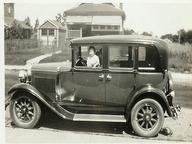Quiz Answer Key and Fun Facts
1. In which industrialized country did the Great Depression have its origins?
2. One unusual phenomena of the Great Depression was what was termed a "run on the banks". What exactly did this term indicate?
3. Works of American literature abound that were written either about or during the time of the Great Depression, especially as it affected hard-hit areas of the U.S.
Which of the following books was NOT written with the backdrop of the Great Depression factoring into the storyline?
4. The man who was president of the United States when the Depression began, Herbert Hoover, had several unflattering things named after him. Which of the following was NOT named in his "honor"?
5. The unemployment rate was higher in Australia than in the U.S. during the Great Depression.
6. Spending fell, unemployment rose, government revenues plunged. The initial reaction of governments was to try to balance the budget, but this merely created a vicious circle. In one European country, deeply divided and heavily in debt (especially to U.S. banks) already before the onset of the Depression, the effects of this policy were particularly devastating, with unemployment reaching 25% plus. By mid 1932 the country seemed to be lurching towards civil war. Coping with the effects of the crisis while retaining its democratic structures seemed impossible as the political system failed. Which country was this that became a dictatorship in 1933?
7. The dangers of having a "one-trick pony" as an economic engine probably could not have been made more clear in any country on earth as it was in Brazil during the Great Depression.
What was the major product that Brazil relied far too greatly upon for trade, which was totally insufficient to sustain its economy once the Depression really settled in worldwide?
8. Which of the following "New Deal" programs introduced during the Great Depression in the U.S. was responsible for the planting of trees, and may have been the most popular of the varied government work programs of the times?
9. It seemed as if a combination of drought, soil erosion, and high winds had all conspired to exacerbate the already existing woes of the national economy of the United States when the Dust Bowl of the American heartland wiped out farms, adversely affecting the livelihood of thousands of farmers.
Which of the following U.S. states was not directly affected by the wind-driven dust storms of the era?
10. There are many ways in which U.S. entry into WW2 was credited with helping to bring the Great Depression to an end.
Which of the following has NOT been suggested as a possibility that helped end the ill effects of Depression?
Source: Author
logcrawler
This quiz was reviewed by FunTrivia editor
bloomsby before going online.
Any errors found in FunTrivia content are routinely corrected through our feedback system.
